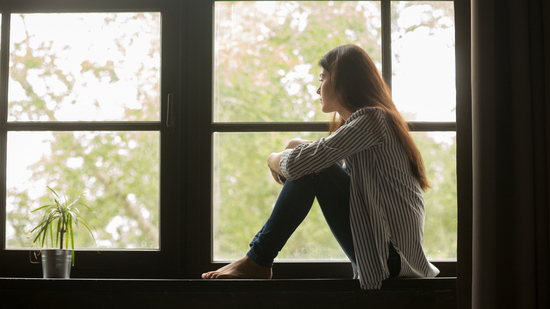There are some days when the noise of the world feels deafening—when every interaction seems too demanding and every emotion feels just a little too much. These are the days when you crave silence, not just around you, but inside you. Instead of reaching out to someone else, learning how to be your own emotional safe space can be the most comforting and healing thing you can do.
Often, turning to a friend or family member is our default coping mechanism. But emotional exhaustion doesn’t always come with the capacity to talk or explain. Even the most well-meaning questions can feel intrusive or heavy. This is when the ability to soothe yourself becomes an act of personal empowerment.
Speaking to HT Lifestyle, psychiatrist and founder of Merlin Health, Dr Tonmoy Sharma explained, “The journey to creating your own emotional sanctuary is not about retreating from the world forever. It’s about building a refuge within you, so when the world gets overwhelming, you know exactly where to go.”
He further added that an emotional safe space isn’t always a literal, physical space. “It’s the mental and emotional environment you create for yourself, where you’re allowed to feel freely—without apology, without shame. It’s a space where your own voice becomes the most compassionate one in the room.”
HOW TO CREATE YOUR OWN EMOTIONAL SAFE SPACE
Dr Sharma shared a step-by-step guide to help people build that space for themselves:
-
Acknowledge your feelings without judgment: Let yourself feel what you’re feeling without labeling it as “wrong” or “too much.” Emotional honesty is the foundation of safety.
-
Identify your triggers and your comfort anchors: Be aware of what overwhelms you, and also learn what calms you—a particular song, a scent, a memory, or a grounding activity like deep breathing.
-
Create a soothing ritual: Whether it’s making tea, journaling, or stepping outside for air—repeatable actions can act as a signal to your brain that you’re entering a space of calm.
-
Practice inner dialogue: When you’re upset, talk to yourself as you would to a close friend—with kindness and reassurance, not criticism.
-
Visualize your space: Some find peace in imagining a cozy room, a beach, or a garden in their mind. Mental imagery can help your nervous system relax.
-
Disconnect without guilt: Silence your notifications, take time off social media, or simply let yourself log off without explanation. Boundaries are not selfish—they’re essential.
Dr Sharma concluded by saying that emotional safe spaces aren’t a sign of weakness or avoidance—they’re a tool for resilience. “We live in a world that rarely slows down. But you can. And in doing so, you give yourself the power to navigate chaos with grace.”
So, next time the world feels like too much, pause. Breathe. And go to the one place that will always welcome you without questions: your inner sanctuary.








 India
India












